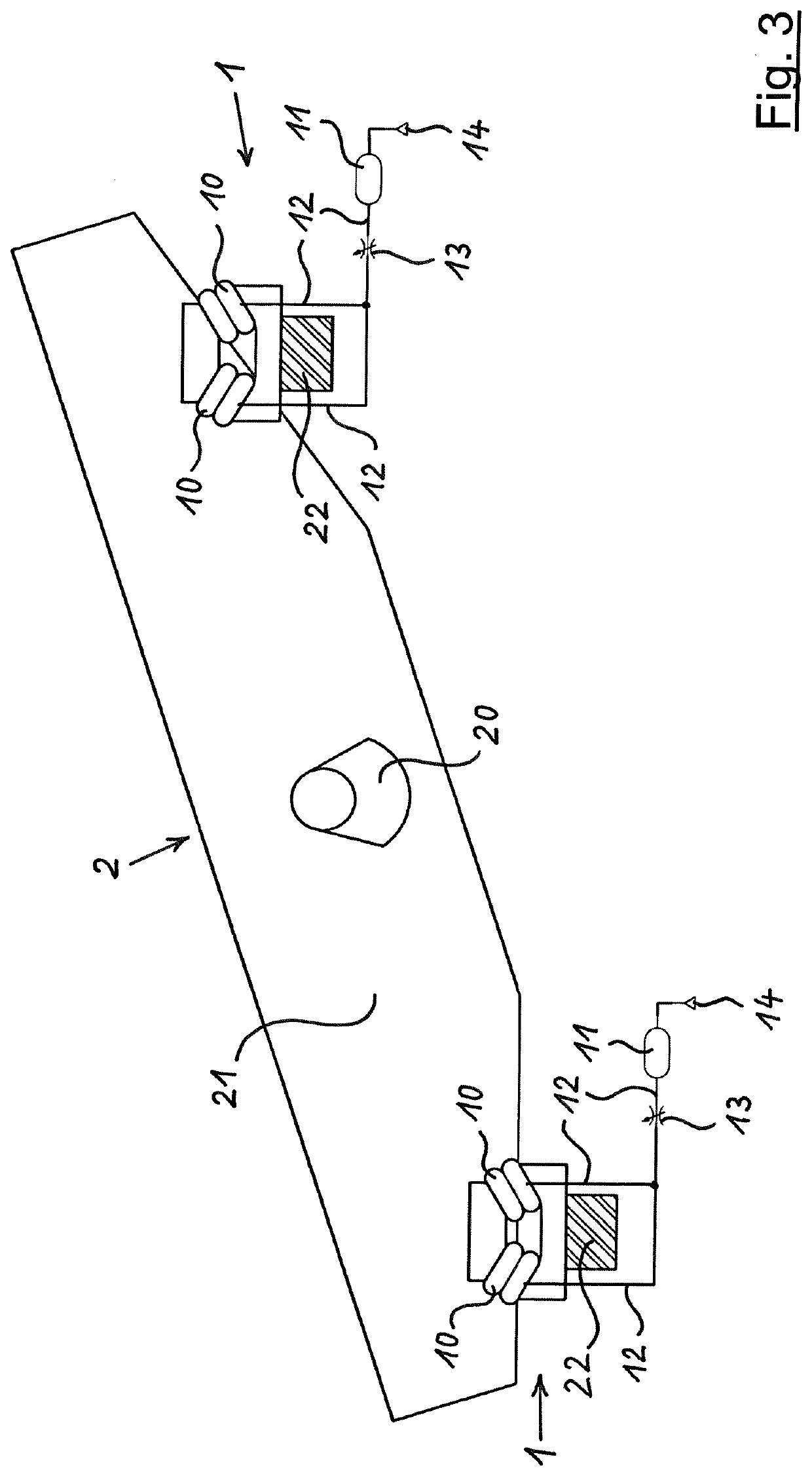Vibrating machine with a bearing device and method of operating a vibrating machine
a technology of bearing device and vibrating machine, which is applied in the field of vibrating machines, can solve the problems of air not being given sufficient time to balance out the pressure, and achieve the effects of preventing the displacement of the vibrating second machine part, low damping, and reducing the stiffness level
- Summary
- Abstract
- Description
- Claims
- Application Information
AI Technical Summary
Benefits of technology
Problems solved by technology
Method used
Image
Examples
Embodiment Construction
[0059]FIG. 1 shows a schematic drawing of a vibrating machine 2, such as a screening machine or vibratory conveyor, having a first bearing device 1. The vibrating machine 2 has a first machine part 21 that vibrates in operation, a second machine part 22 connected to an installation surface of the vibrating machine 2 and a vibration drive 20 such as an eccentric mass set into vibration by a rotary drive, as indicated in FIG. 1 and as is known per se. A screening or conveyor surface is hidden behind the visible part of the first machine part 21 in FIG. 1 and is likewise known per se.
[0060]A resilient bearing device 1 is arranged between the machine parts 21, 22 to make the vibration of the first machine part 21 possible relative to the second machine part 22 and to decouple the vibrations of the first machine part 21 from the second machine part 22 and from the installation surface and the environment.
[0061]The bearing device 1 has one air spring 10 per support point. Two front suppor...
PUM
 Login to View More
Login to View More Abstract
Description
Claims
Application Information
 Login to View More
Login to View More - R&D
- Intellectual Property
- Life Sciences
- Materials
- Tech Scout
- Unparalleled Data Quality
- Higher Quality Content
- 60% Fewer Hallucinations
Browse by: Latest US Patents, China's latest patents, Technical Efficacy Thesaurus, Application Domain, Technology Topic, Popular Technical Reports.
© 2025 PatSnap. All rights reserved.Legal|Privacy policy|Modern Slavery Act Transparency Statement|Sitemap|About US| Contact US: help@patsnap.com



